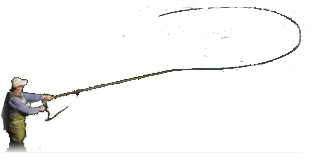Update: 8 August 2020: back in 2017 an item was added about a conservation group, the Royal Forest and Bird Protection Society Incorporated, which won a court case preventing public land being exchanged for other land in order to construct a hydro-electric dam on a major trout river (the Tukituki). The decision was made by our highest court (Supreme Court) so it cannot be appealed. See http://www.forestandbird.org.nz/what...-land-in-supre
It now appears that the original backers of the dam have revived the proposal, aided by funding from the local council, which is biassed in favour of the project. So conservation groups must pick up the cudgels again to defend the river.
<p>
As part of the movement supporting better water protection laws in New Zealand, a website "Save our Streams" has been set up. It has statistics showing the threats to water quality and links to various useful news items on the issue. See http://www.h2whoa.co.nz/news/"]http://www.h2whoa.co.nz/news/ [/URL]Farming interests are putting a lot of misleading information into the media, but water quality is a major issue for many people and New Zealanders won't be fooled. Update 30 December 2019: another pollution incident courtesy of New Zealand's dairy industry. This sort of thing is all too common now: see https://www.nzherald.co.nz/nz/news/article.cfm?c_id=1&objectid=12296437"]https://www.nzherald.co.nz/nz/news/article.cfm?c_id=1&objectid=12296437 [/URL]
Update 5 Feb 2020: heavy rain in Southland province has caused a massive flood in the Mataura river, a top brown trout fly stream favoured by overseas anglers. Towns are being evacuated. There are fears that the rising waters will reach an abandoned paper mill in the lower reaches where toxic waste (an aluminium by-product) has been stored.
As so often happens the company owning the mill has folded up. Back in 2018 the local authorities were told the waste would be a major risk if it came into contact with water but, in their wisdom, they deemed that to be unlikely to happen. Update 20 Feb 2020: toxic algae has been found recently in Lake Hayes, a South Island water body. See the report at https://www.rnz.co.nz/news/national/409675/toxic-algae-warning-for-queenstown-s-lake-hayes"]https://www.rnz.co.nz/news/national/409675/toxic-algae-warning-for-queenstown-s-lake-hayes There have been other reports of algae appearing in streams in Southland. This is the real New Zealand, people.
Update 4 Feb 2021: the government and NZ Aluminium Smelters (owned by Rio Tinto corporation) have reached a settlement on how to deal with the toxic waste. it will be trucked away to a secure site for processing and sent offshore. Cost will be shared 50/50.
According to a media report, "Another company, ... moved 10,000 tonnes of the ouvea premix - a waste by-product resulting from aluminium production at the Tiwai Point smelter - into the Southland town in 2014 without permission and then went out of business.
Last year, the waste was threatened by flooding and fire, adding urgency to need to remove it from the disused papermill in Mataura."
In another development, the government Auditor-General has criticised both central and regional government institutions for their poor handling of NZ water resources. Refer to https://www.scoop.co.nz/stories/PO20...management.htm
Update, 16 March 2020: New Zealand now requires all in-bound overseas visitors to self-isolate for 14 days in order to counter the threat from the Covid-19 virus. Cruise ships have been banned from visiting our waters until 30 June next. Update, 21 March 2020: New Zealand has closed its borders to visitors. NZ now has 53 confirmed cases of Covid-19 virus. See the immigration website for immigration restriction rules (https://www.immigration.govt.nz/abou...e-inz-response) Good luck to all fly fishers out there, and your families. Remember, we will get through this.
Update 2 May 2020: Excerpt from a NZ government report on the state of our rivers:
"From 1994 to 2017, the number of dairy cattle in New Zealand increased by 70 percent (from 3.8 million to 6.5 million). During the same period, the number of sheep decreased by 44 percent from 49.5 million to 27.5 million, and the number of beef cattle decreased by 28 percent from 5 million to 3.6 million. The increase in dairy cattle has been most pronounced in the South Island (see figure 9), notably in Canterbury, Otago, and Southland.
"The area of land used for dairy farming has also increased. In 2016, 2.6 million hectares was used for dairy production (a 42 percent increase from 2002), while the area used for sheep and beef farming was 8.5 million hectares (a 20 percent drop in the same time)."
This shift from sheep and beef farming to dairy farming is associated with increased leaching of nitrogen from agricultural soils. Leaching occurs when the concentration of nitrogen in the soil (from animal urine and fertiliser) is greater than the amount that soil and plants can absorb."
For the full report, go to https://www.mfe.govt.nz/overview-our-freshwater-2020.
Update, 5 May 2020: the NZ Federation of Freshwater Anglers has revamped its website. Take a look at it on https://nzffa.com/ to see articles on current issues for anglers. One of these is by freshwater scientist Professor Mike Joy - "Health Issues Lurk in our Water".
Update 29 May 2020: the NZ government has announced a package of reforms for cleaner waterways, but it falls short in some areas by not implementing measures recommended by scientists. Read the article by Prof Mike Joy here for his views on the matter: https://i.stuff.co.nz/national/polit...vers-and-lakes




 Reply With Quote
Reply With Quote